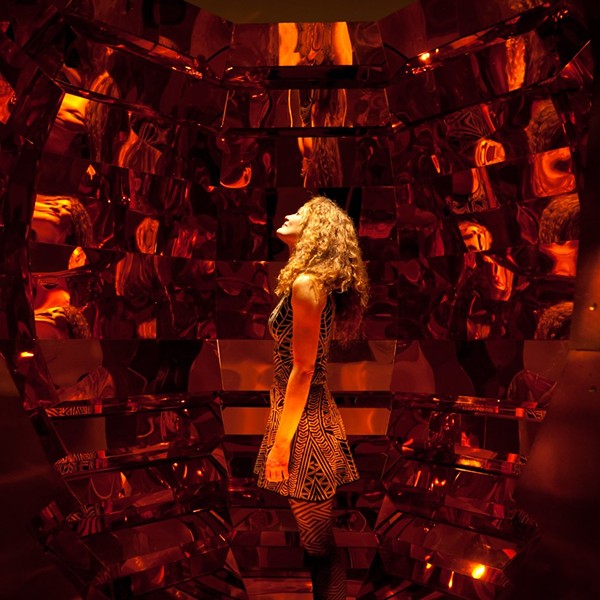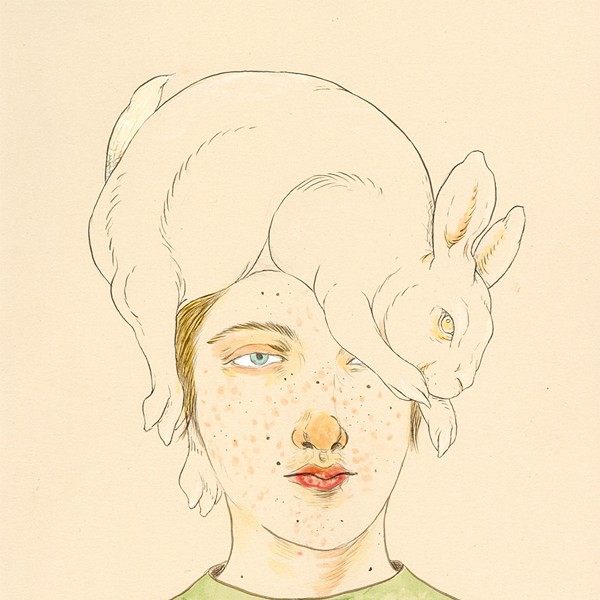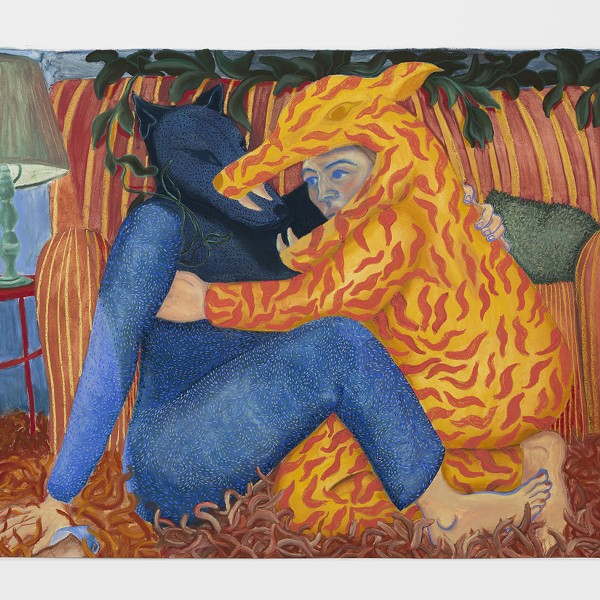The word “sculpture” used to be more-or-less synonymous with the word “statue.” Once upon a time, sculpture meant some sort of hard material that would withstand the elements (stone, wood, bronze) modeled, carved, or cast in human form. Over the course of the last hundred years or so, sculpture has come to signify virtually any kind of three-dimensional object considered in an artistic context, such as a gallery or museum—or an outdoor sculpture park, which provides a context for art full of both possibilities and potential problems.
The Fields Sculpture Park at Omi International Arts Center is tucked away on a small road just off Route 9 in Columbia County. Encompassing about one-quarter of the 400-acre site, The Fields are dotted with about 80 works—let’s call them sculptures, for lack of a better term—by internationally recognized artists. The 2009 summer exhibition at The Fields, which just opened in June, features newly installed pieces by six artists (two of whom are a collaborating couple) who confront the possibilities and problems of working outside in a variety of ways.
The most prominently installed new work at The Fields is by Julian Opie, a British artist whose hipness quotient is bolstered by having designed an album cover for the British power-pop band Blur. Opie uses computer-assisted design and animation to create highly simplified images that border on pure illustration: he’s a pop artist in the age of video games. At Omi, Ruth Walking is an 11-foot high vertical panel faced on both sides by LED screens on which a simplified image of a girl walking is animated in a continuous loop. Installed atop a grassy knoll, the panel is placed upon a large concrete plinth about five feet high, lending it a monumentality that alludes somewhat humorously to the tradition of the monolithic statue. On a summer day, the red glow emitted by the panel is starkly contrasted against the horizon where green grass meets the changing sky, a clash of nature and culture in which both win.
In contrast to the monumentality of Opie’s piece, a work by the young native New Yorker Orly Genger lies prone on the ground. Genger weaves nylon climbing rope into an open fabric, which she then paints. A peculiar choice of materials in an age when choice of materials can function as style, the results are surprisingly successful. At Omi, she has made a sort of horizontal collage directly on the grass, overlaying swaths of the woven pieces in a variety of shapes and sizes like so many fabric samples, contrasting the colors to dramatic effect. The green of grass growing through the open weave adds another color to the mix.
Installed inside the beautifully designed Visitors Center & Gallery are works by the Welsh couple Heather and Ivan Morison. The artists produced two very large kites, one of nylon, the other in Mylar, based upon the intricate facets of gemstones. They have actually flown these pieces, as improbable as that seems given their size and complexity. Hanging from the ceiling in the gallery, one imagines them set aloft, buoyed by the wind.
Rounding out the selection of new work at Omi are pieces by the young Margeaux Walter and the 74-year-old Richard Nonas. Walter’s piece, a quad of self-portraits set in a boxy unit that alludes to both Minimalism and outdoor advertising, is faced in lenticular material that changes the image depending on the angle at which it is viewed. As slick and prone to incite covetousness as a brand-new iPod, the work speaks of youthful narcissism. Nonas’ grid of railroad-ties sprawls across a hillside; titled Smoke, the work hangs on the ground like a low fog. Like all the work at Omi, these pieces propose provisional solutions to the perennial puzzle, “What is art?”
The 2009 Summer Exhibition at The Fields Sculpture Park at Omi International Arts Center in Ghent will be on display through September 30. The park is open dawn to dusk, and admission is free. (518) 392-4747; www.artomi.org.
















